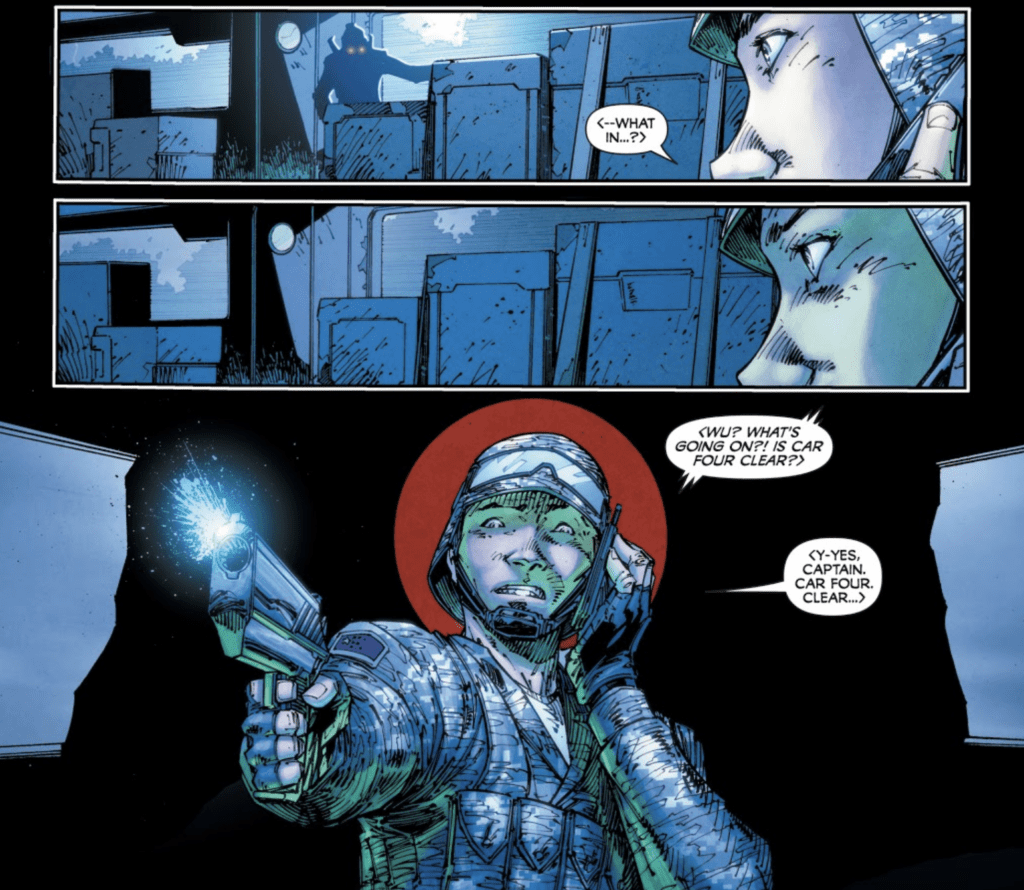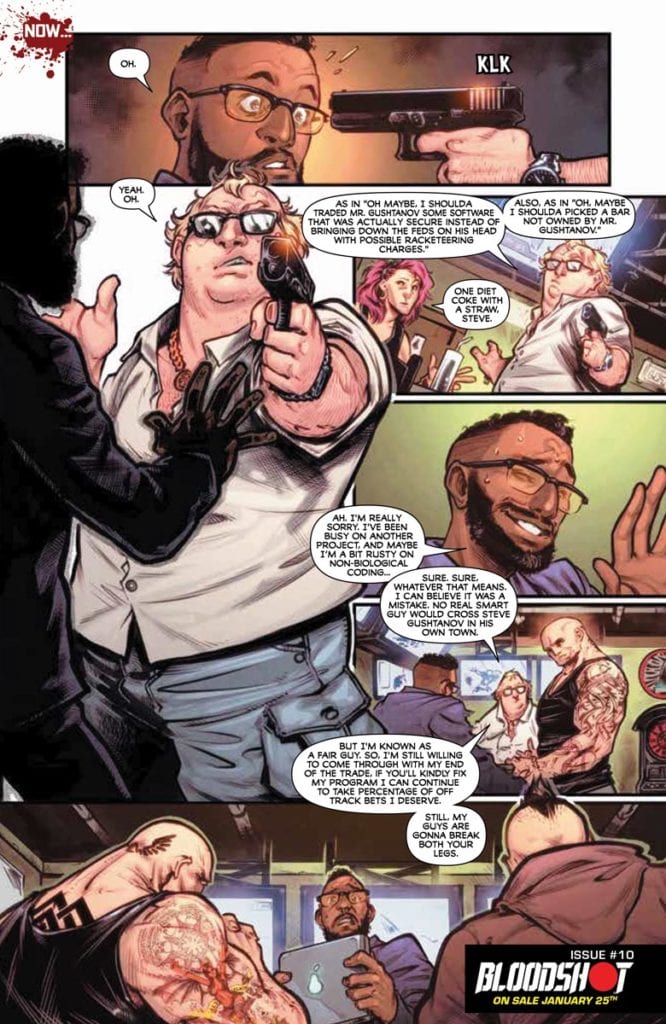BLOODSHOT #10 – Part 1 of “One Last Shot” hits your local comic book shop next month, but Monkeys Fighting Robots got a chance to talk with veteran colorist Andrew Dalhouse about his process and what he brings to Bloodshot.
Dalhouse has worked for all the big publishers and has been a busy man for the past ten-plus years, with his most notable works being Irredeemable, Faith, New 52 Teen Titans, and now Bloodshot.
About BLOODSHOT #10:
He only has “One Last Shot” as the brand-new story arc starts now! Superstar artist Brett Booth and Pedro Andreo join best-selling scribe Tim Seeley for Bloodshot’s road to retribution. Who can one a one-man army trust when everyone’s trying to kill him? On sale January 13, 2021.
Andrew Dalhouse Interview:
MFR: As a novice when it comes to the work of a colorist, what elements stand out in your work?
ANDREW DALHOUSE: Storytelling. I try my best to convey the story in color. Leading the reader by adjusting the color temperature to the emotions happening on the page.
MFR: What is your philosophy when it comes to colorwork in comics?
ANDREW: Enhance what story the artist and writer are telling.
MFR: What a colorist can do in comics has exponentially changed over time. How has your style evolved over the past 20 years?
ANDREW: Before I started coloring comics, I went to art school and used a variety of mediums before I started using computers. Computers make the job easier and faster to do certain things. I do miss using markers and watercolors. I still use them, but just for fun when I have free time.
MFR: When I see a lightning blue or a fiery yellow in a comic book, I get excited. Is there a color that gets you excited when you use it?
ANDREW: Actually I get excited to see both blue and fiery yellows. I love seeing a good purple and yellow used in a complementary way. I really loved what Justin Ponsor did on that last Defenders series. The book was so pretty.
MFR: How deep do you go into Color Psychology when laying out a book? Do you think about the emotional impact you have on the reader?
ANDREW: It goes deep. I try and convey emotions by using different color temperatures and secondary lighting. This is the main reason I love receiving a book in page order. It makes it easier to see how the story plays out. The script helps, but a lot of the time the artist adds or subtracts from what the script says. Those additions and subtractions can make a huge difference in how I color a book.
MFR: Bloodshot is a character set up for great colorwork with his blue-ish white skin and the potential for blood going everywhere. How do you put your personal spin on Bloodshot?
ANDREW: I always have his eyes and chest symbol a bright red. They are his biggest defining features, and I want that to show through always. I try to make them also have a boogeyman element in dark, moody scenes. Bloodshot #4, page 1, shows how it can be used dramatically.

MFR: Who are some great colorists that inspired you?
ANDREW: Justin Ponsor, Frank D’Armata, Steve Firchow, Laura Martin, J.D. Smith, Jessica Ruffner.
MFR: Bloodshot has a good amount of action; what is your role in taking the action to the next level?
ANDREW: Help make those action beats readable and enhance them. Really make that explosion looks cool and cinematic. If it’s a big gun battle, there will be lots of fiery yellows. I will use rim lights to help separate the characters.
MFR: What is the one thing you wished more people knew about colorists?
ANDREW: We work very hard. There is a misconception that the computer does most of the work. There is no magic “Color Page” button on our keyboards. The computer is just a tool. Just like a penciler’s pencil or an inker’s brushes and nibs. It takes knowledge, training, and lots of coffee to get the job done.
MFR: Andrew, thank you again for your time, and best of luck with BLOODSHOT #10!
ANDREW: Thank you for the interview. It was fun.


